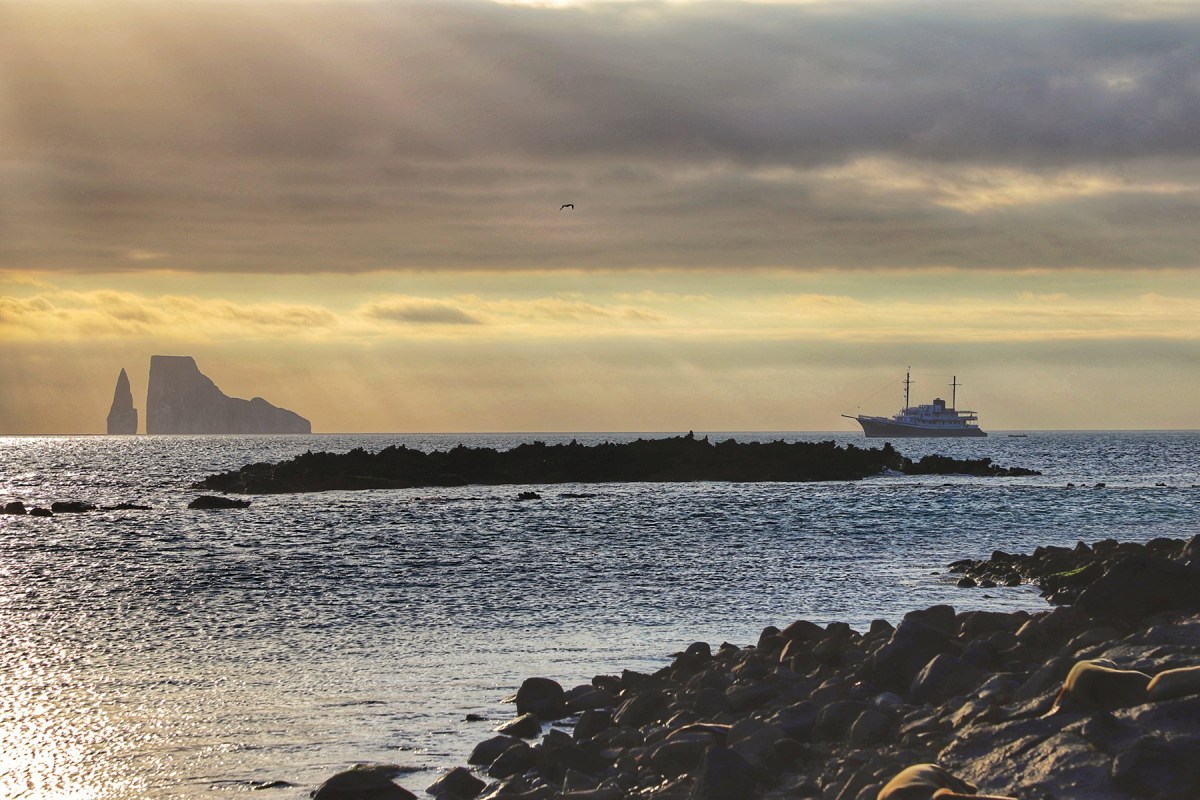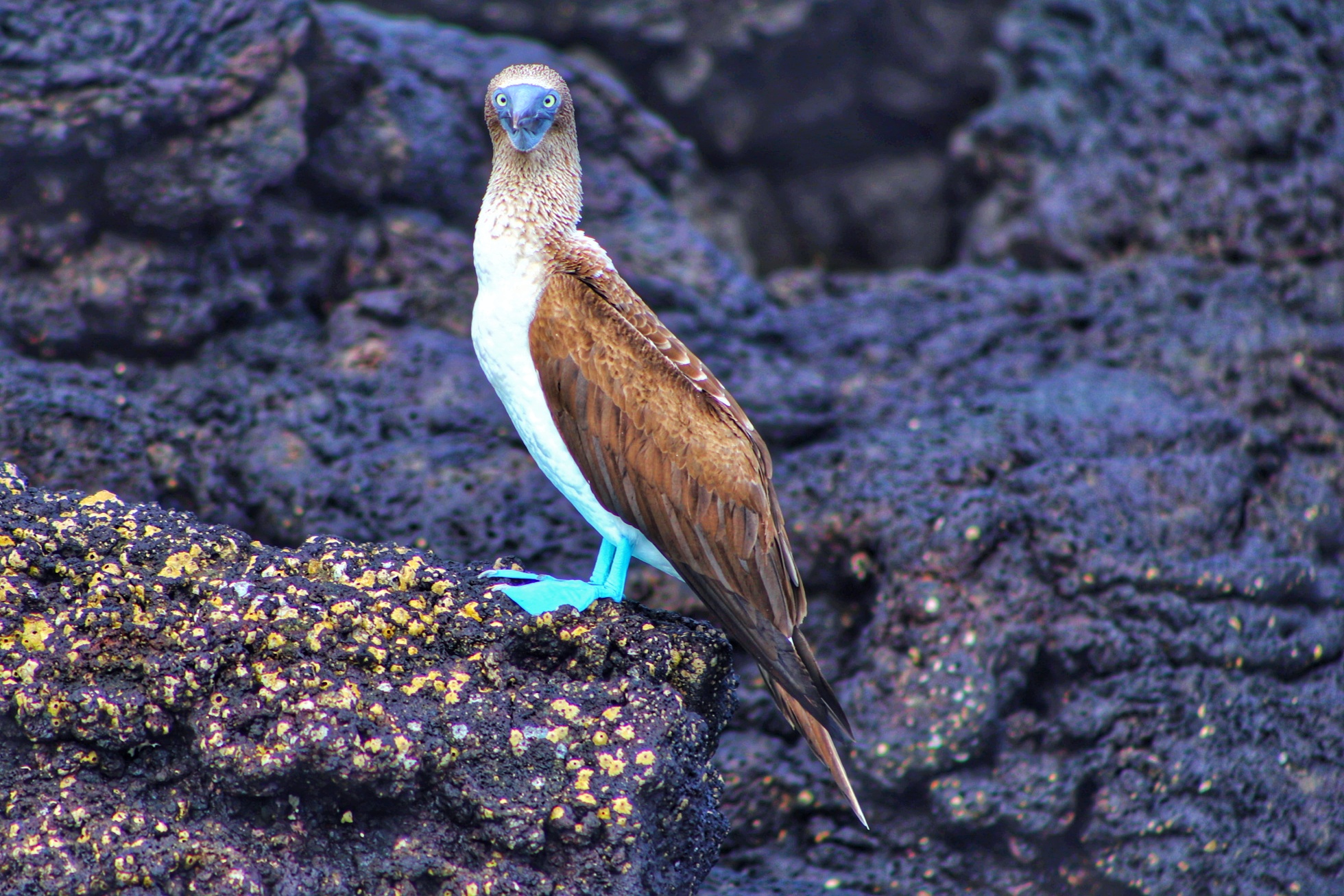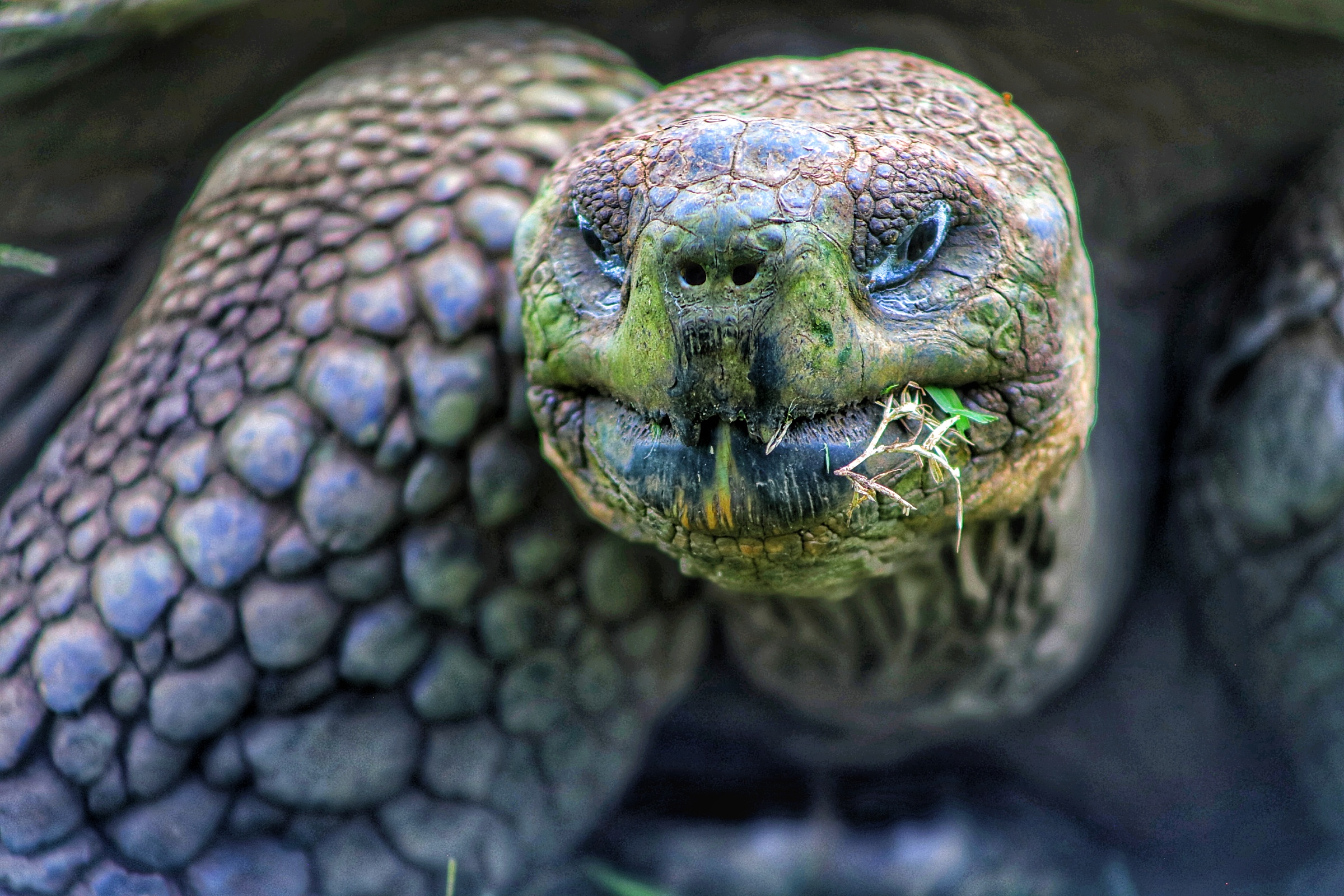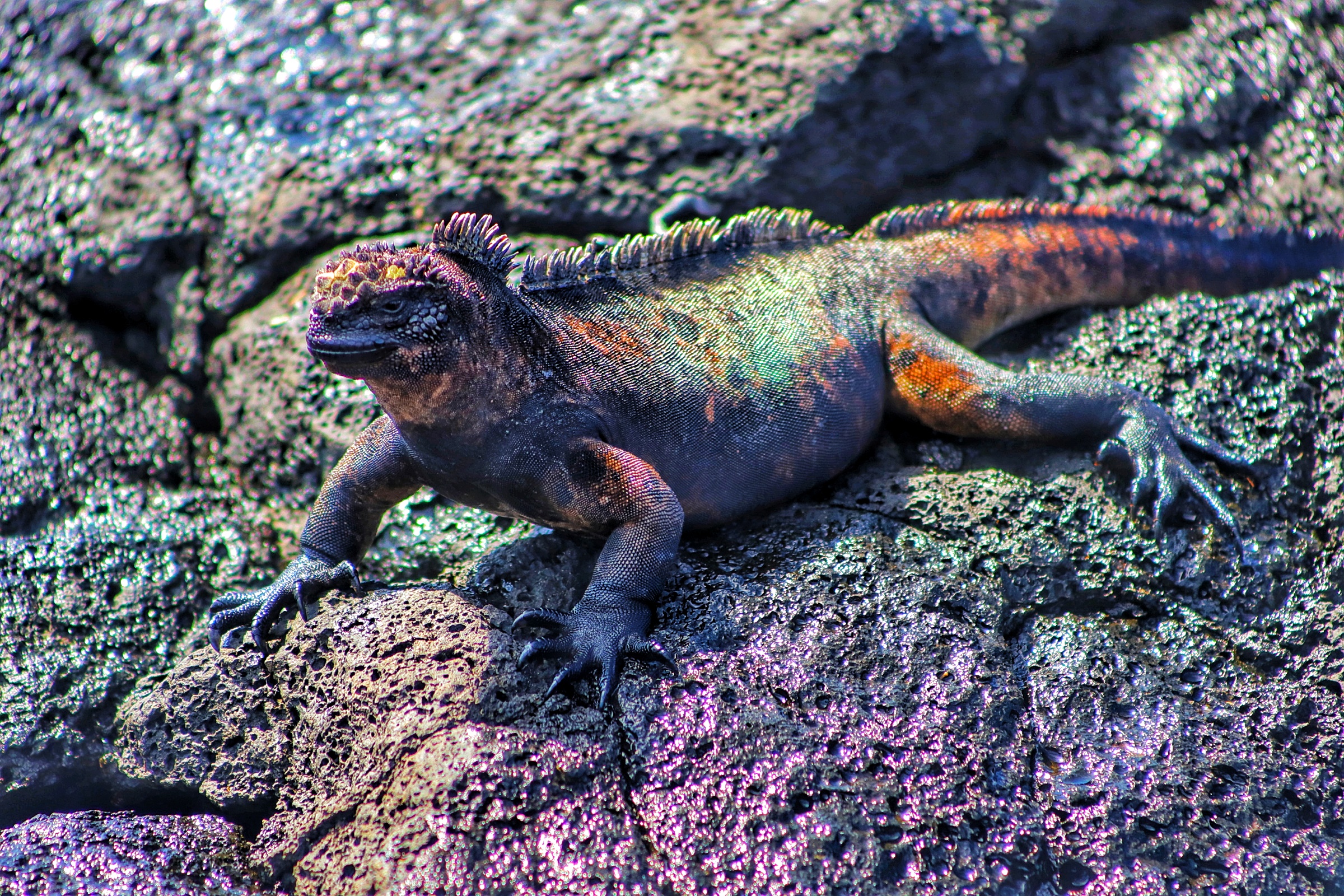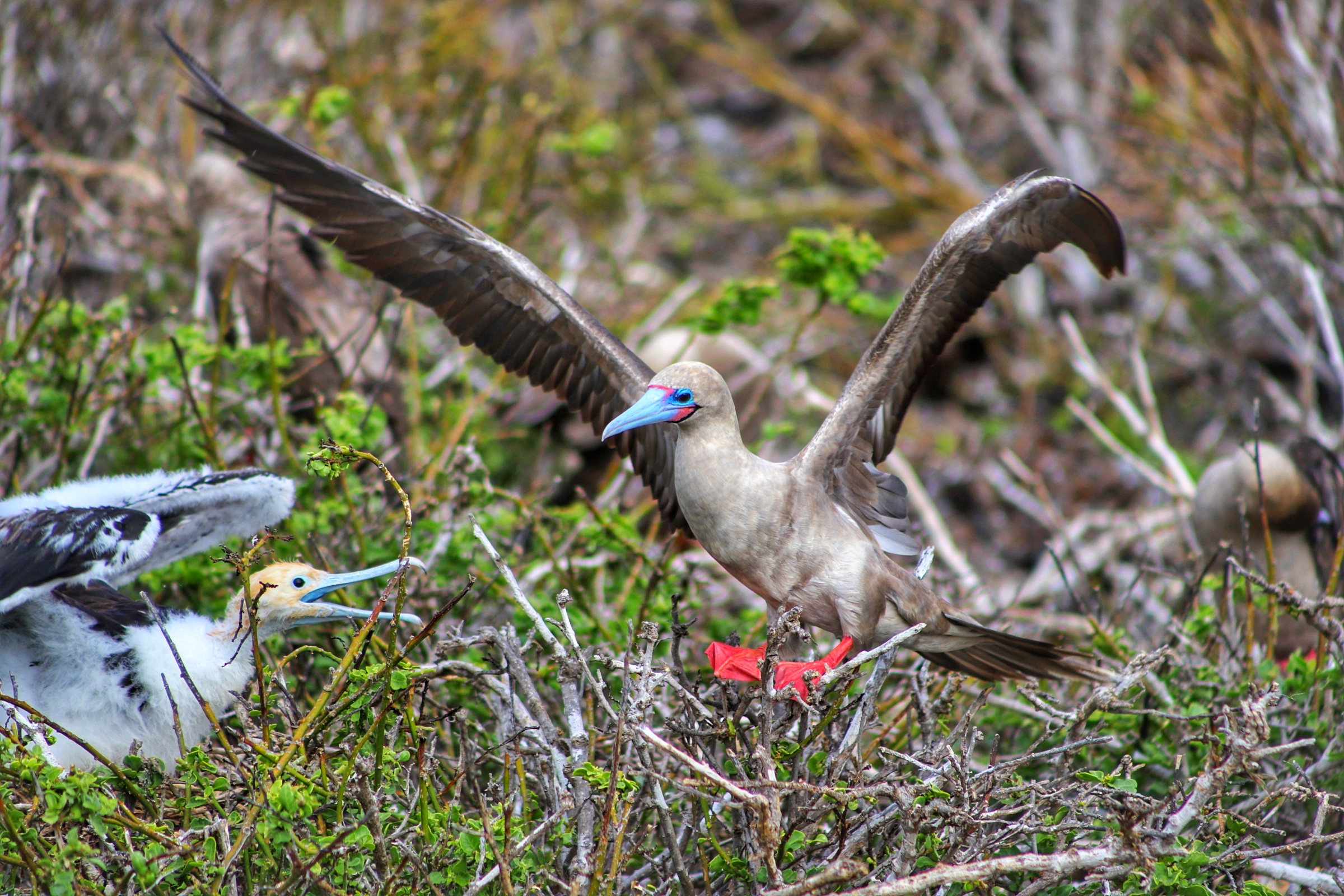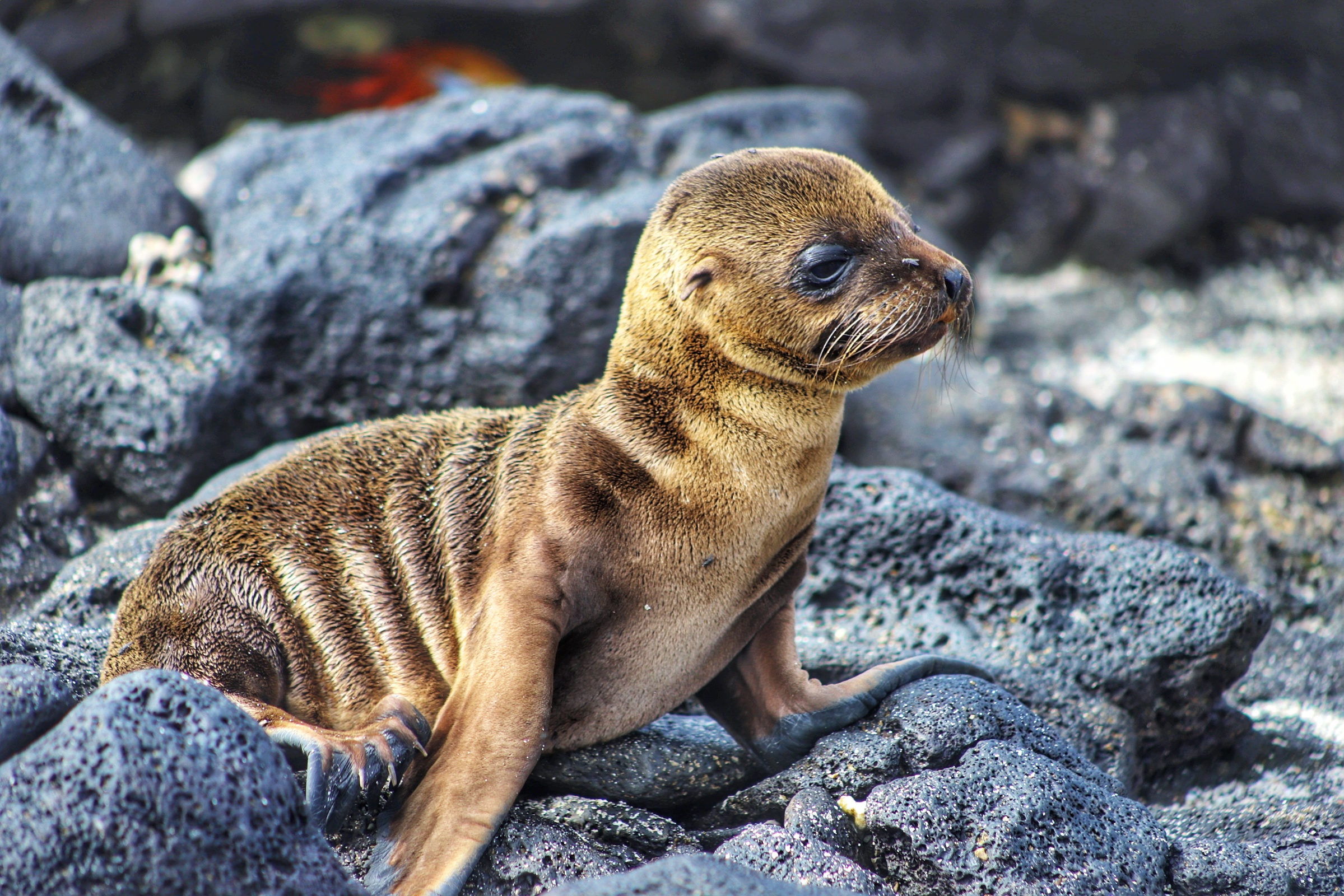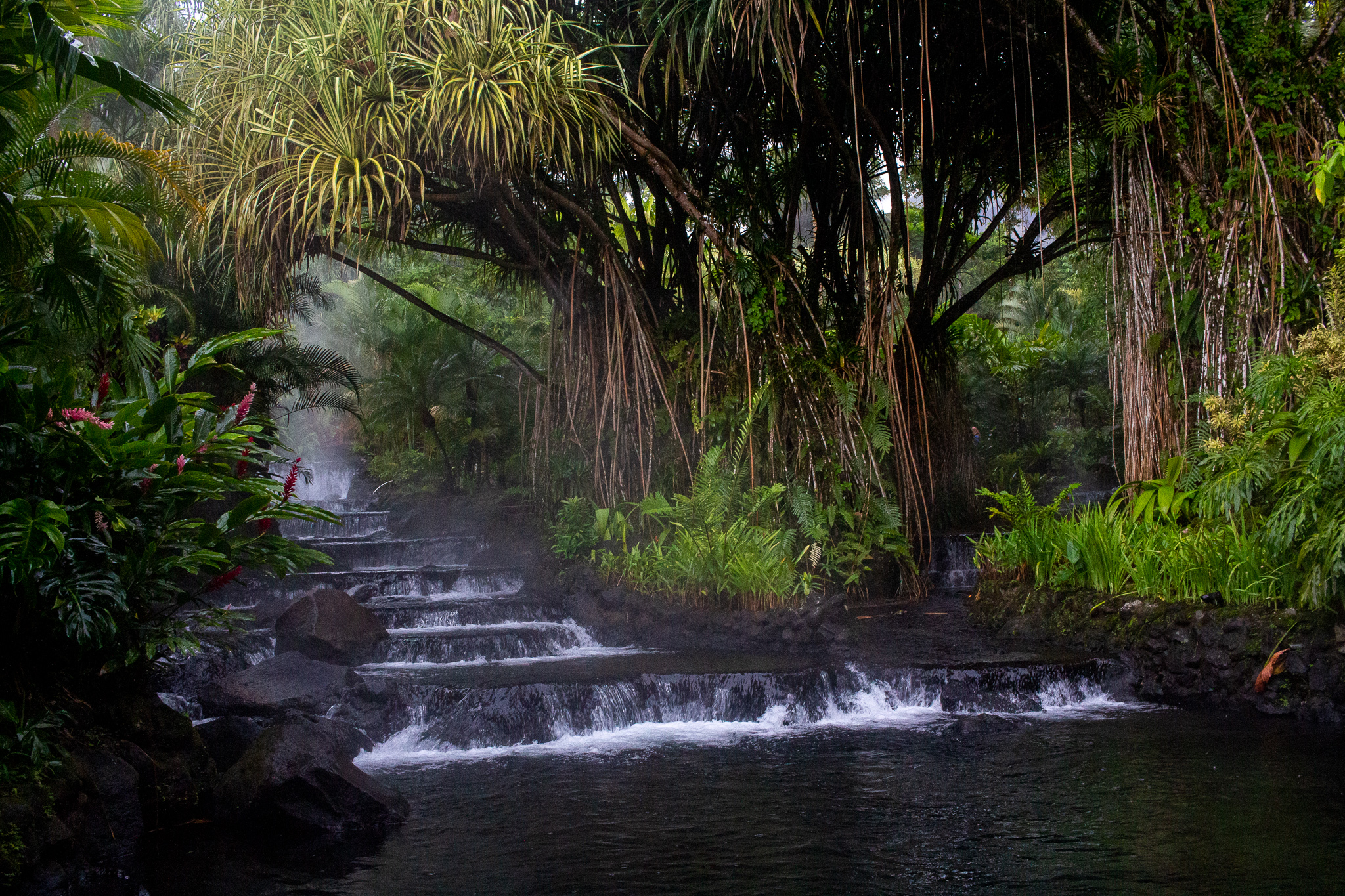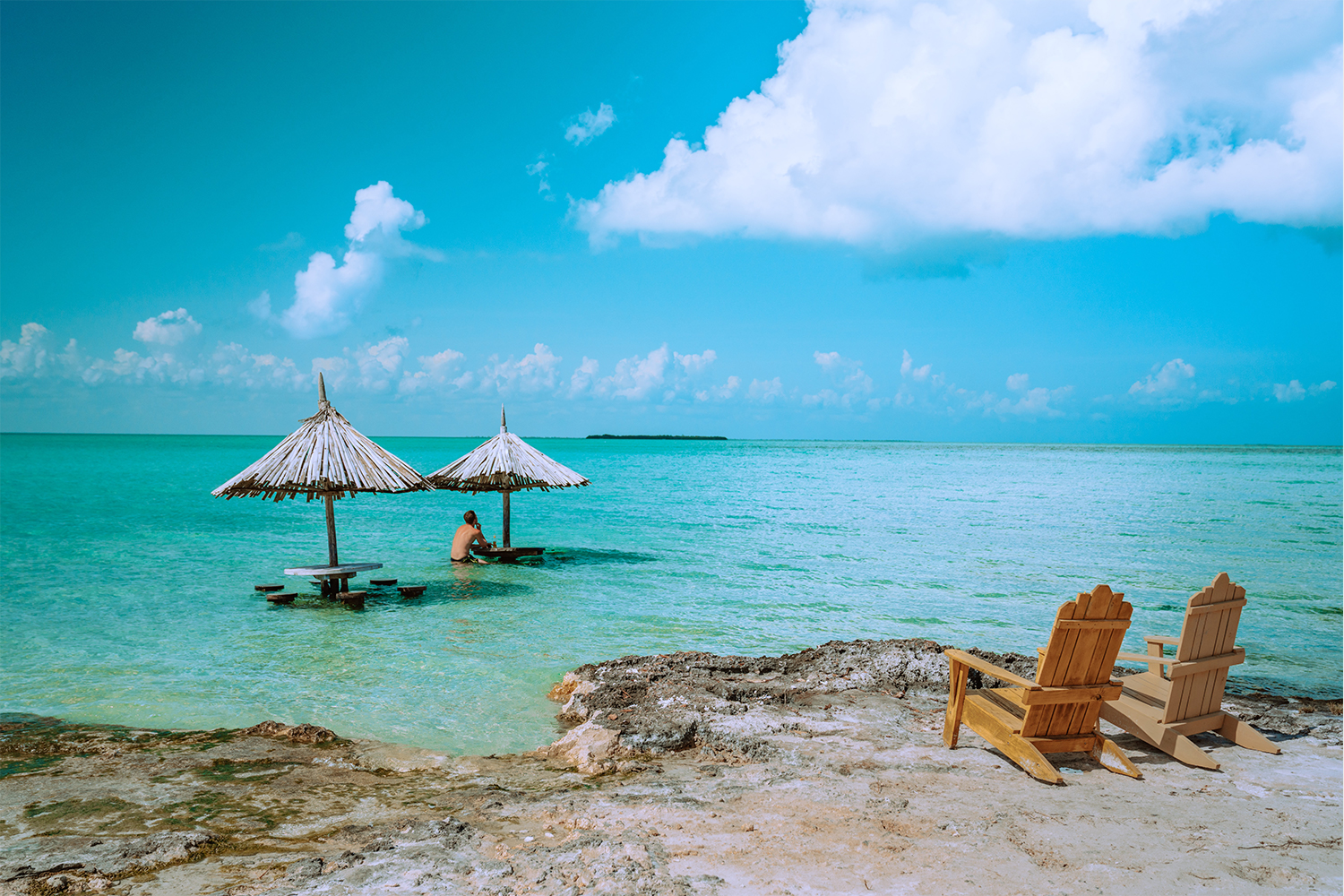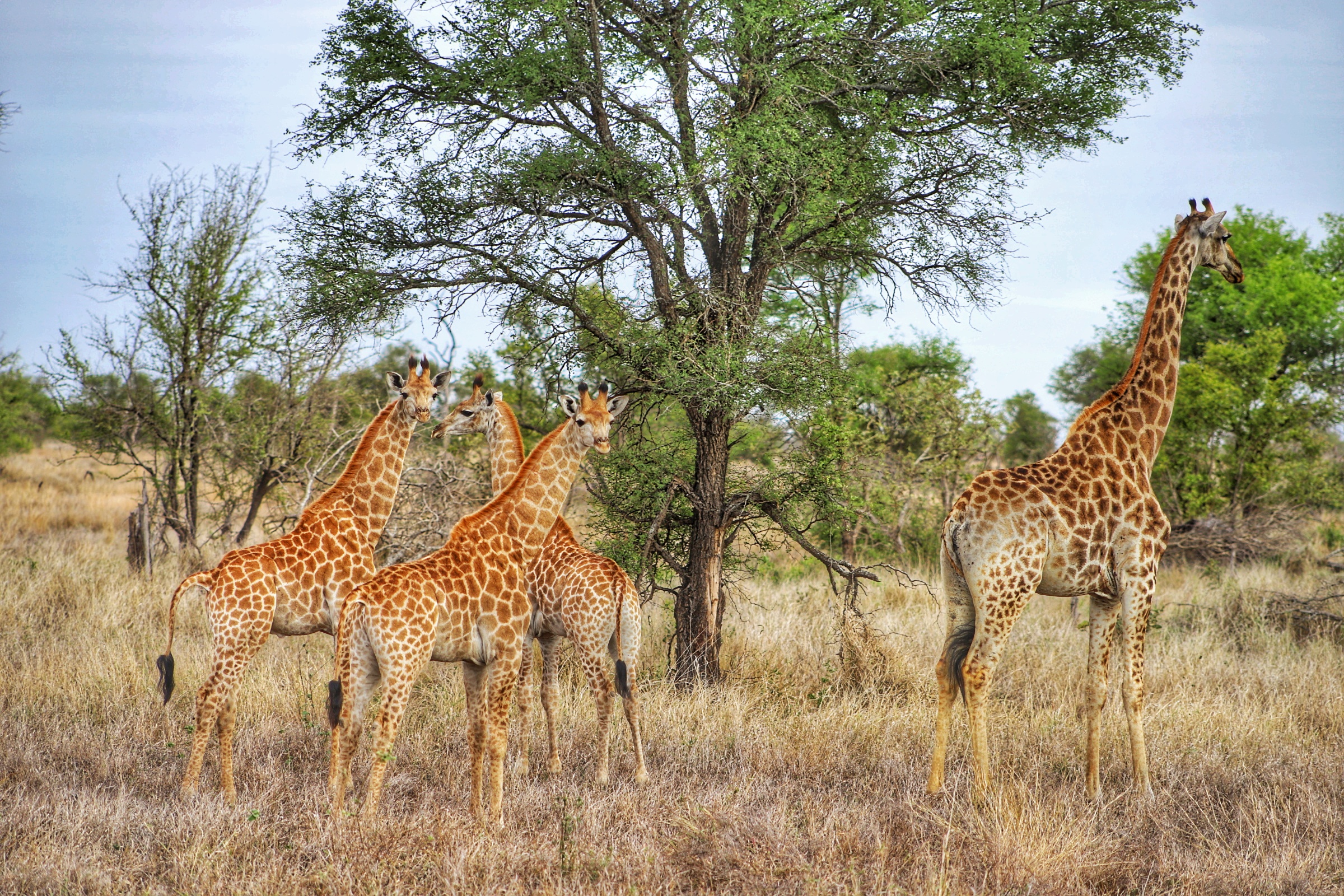A dozen people are riding in a dinghy atop the bumpy waves and deep waters of Darwin Bay, a caldera that took a mile-wide, circular bite out of Genovesa Island. The sea here is known as a hub for hammerhead sharks, and everyone aboard is eager to get a rare glimpse of the creatures.
“This is the only moment of these trips when I’m scared,” deadpans Alex Cox, placing his hand on my shoulder for emphasis. He’s been a guide within his native Galápagos Islands for more than three decades, the last two of which have been with Quasar Expeditions. Though you know he’s joking, a conspicuous note of trepidation sets in as you throw yourself over the side of the small craft into water which drops off precipitously — straight to a depth of 250 meters — from the rocky cliffs which encircle it.
Within moments, a massive, dark brown shape appears below with the telltale outline of the hammerhead. It’s a nine-foot beauty of a beast, gently swaying side-to-side as it swims in the same direction I am, overtaking my pace with ease and returning to the darkness of the murky water as quickly as it had appeared.
Soon after this first viewing, a few groups of hammerheads, about a dozen in total, arrive, bestowing the snorkelers in the area with an utter, heart-pumping thrill as we encroach ever so slightly upon their turf (er, surf). After spending a few days with Cox, you realize he’s always joking, but his one-liners are delivered with such a consistent monotone that you’ll miss them entirely if you’re not clued into his mannerisms.
Cox is the head guide aboard Quasar’s M/V Evolution, a ship which runs several different Galápagos Islands cruises, including the seven-night voyage I embarked upon. The former Japanese fishing boat has been outfitted for luxurious exploration, sailing across the Galápagos with the style of a yacht crossed with the capabilities of an expedition vessel.
The ship is the ideal size for the region, as larger ones can’t visit everywhere she can, due both to water conditions as well as restrictions on the number of tourists which can visit certain areas. Any smaller, though, and you’re on a boat more akin to a private charter, which is that much more susceptible to choppy waters and likely doesn’t have any outdoor spaces in which to congregate and enjoy the passing scenery passing.
With a maximum of 32 passengers in 16 staterooms, the Evolution is divvied up into three smaller groups on board — shout out to my fellow Dolphins — which are easily manageable for activities (again here, a larger ship could prove more cumbersome). Nearly 200 feet in length, the M/V Evolution sports four decks, with indoor and al fresco dining areas, multiple lounges and a full allotment of gear.
If the rhythms of a safari are game drives and sundowner cocktails, aboard the M/V Evolution, it’s daily snorkeling trips sandwiched between shore excursions such as hikes and nature walks. After a casual hammerhead sighting, for instance, you hop aboard to eat a loaded lunch and enjoy some leisure time before heading back to land, viewing another sensational sunset, and preparing for an evening lineup including a nightly seminar, a multi-course dinner and a bar which keeps on serving until you’re ready to call it quits. As a word to the wise, with 6:45 a.m. wake-up calls for that first excursion of the day, you’d be well served to display at least a bit of discretion with your nightcaps.
With multiple daily activities across a week of Galápagos sailing, the itinerary is stacked with an abundance of splendor and adventure. The week goes by in a flash, yet each day is so jam packed as to feel more like two or three in one.
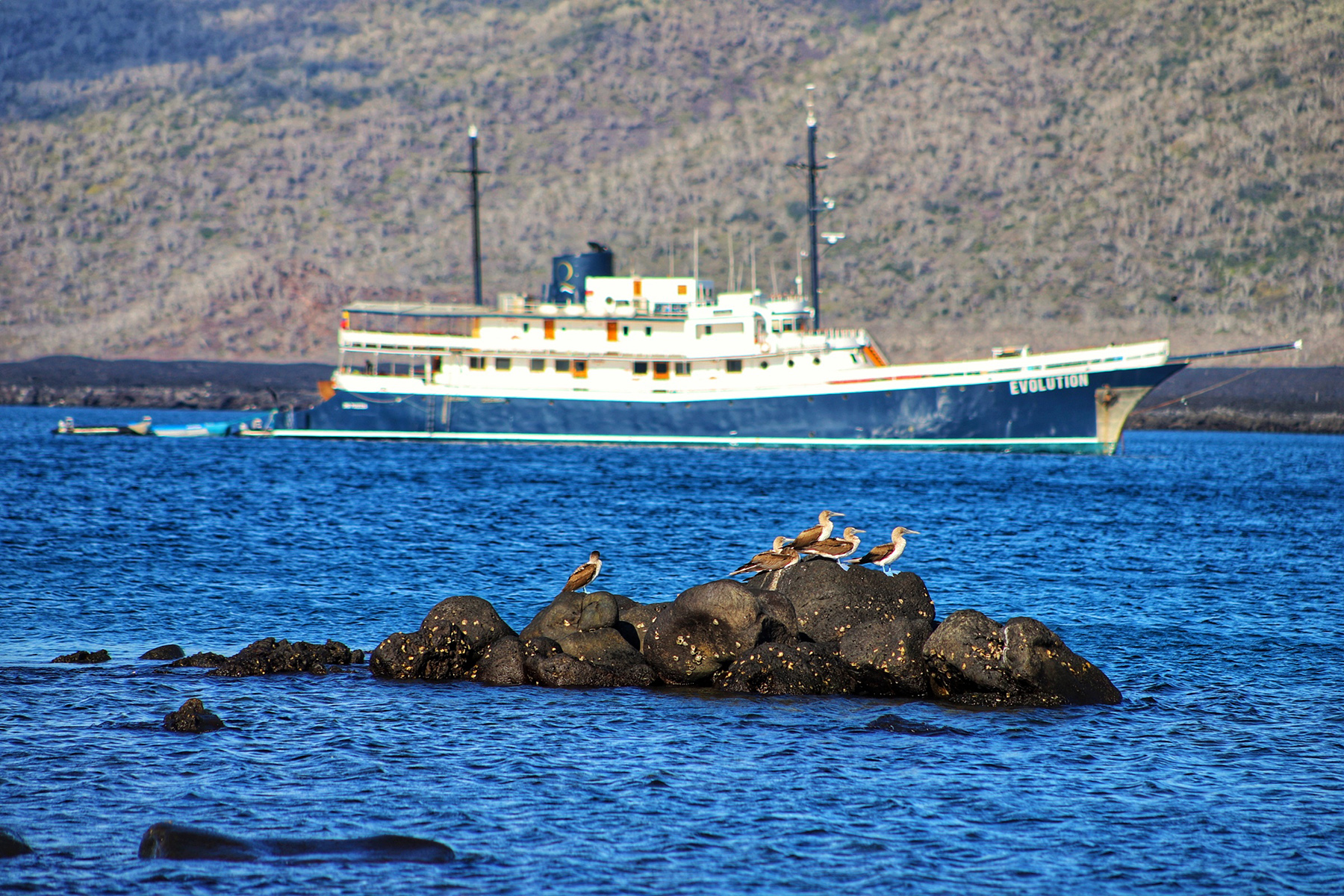
The Daily Wonder of the Galápagos
All it takes is your very first step off one of the dinghies which ferry you from the ship to the shore to understand how unique the Galápagos Islands truly are. After sailing past the impressive Kicker Rock formation during our first day of the trip, we land upon the powdery white sand beaches of San Cristobal Island’s Cerro Brujo, where a tiny sea lion pup perhaps two weeks of age serves as our welcome committee. “You have two days to stop calling them seals,” says Hernán Olaya, another of the guides aboard the ship. “After that, you have to buy me a drink.” It’s a good thing Hernán doesn’t drink, then, because few of us were able to succeed against the gauntlet he threw down.
When you’re able to pry your gaze away from the outrageously adorable sea lions, you notice that the sand in front of you is crisscrossed with iguana tracks and there are dive-bombing boobies splashing into the sea in search of a meal. Bright red Sally Lightfoot crabs skitter across black volcanic rock, and in every direction, the more you look, the more you see, the colors, animals and scenery swimming all around you in vivid detail.
In the Galápagos, the landscapes are just as diverse and captivating as the wildlife. Black sand beaches and lava flow formations juxtapose with turquoise waters and end-of-the-earth vibes evocative of Iceland. But instead of geothermal spas and waterfalls, there are sea lions, boobies and species of flora you’d swear were extraterrestrial if you were anywhere but here. Candelabra cacti somehow sprout from the rocks while bright yellow and orange land iguanas munch on their paddles. Deep red sesuvium bushes stretch to the horizon. But a stone’s throw away on the same island, you may find something entirely different, each little nook and cranny seemingly presenting its own distinctive ecosystem. You can see why Charles Darwin dug the place when he arrived there in 1835.
The animals capture more of your attention than the environs, of course. Like the huge sea turtles you snorkel with, and the even more massive giant sea tortoises you come across on land. Where, off in a green pasture on Santa Cruz Island, you’ll spot a scattering of them alongside cattle and goats, sitting in the grass looking as perfectly at home as anything else. The dolphins which may swim aside the ship as you sail from one landing to another, and the Manta rays which jump and spin out of the water in the distance. The land iguanas and marine iguanas, the many sharks, the penguins and flamingos, the sea lions and fur seals and parrot fish … the list goes on.
On another afternoon, we stop at Santa Fe Island and experience what has to be one of the ultra you’re-in-the-Galápagos moments. Within minutes of boarding a dinghy toward the shore, we spot a huge school of beautiful spotted eagle rays, and besides them, two dozen whitetip reef sharks. On shore, there’s a large colony of sea lions, and a sea lion pup who’s but a few days old paddles over to say hello.
“This is like paradise,” someone nearby says, as we take in the clear blue waters in the little bay, with such a wide assortment of wildlife on hand as to seem like a little Galápagos playground was built to put on a show for visitors. There’s something new in every direction, and after leaving the beach, we hop into kayaks for a different perspective on the same scene.
Now the sea lions begin tugging at the ropes which are used to tie the kayaks together for storage, and sometimes one or two of them take the reins and drag your kayak, while at other times, they let you do the manual labor as they hang on and get towed behind. You’re not supposed to let them grab the rope, but you can hardly stop them. The super playful sea lions are truly the dogs of the sea.
Even better is when you witness their zest for playtime by getting in the water with them. If swimming with hammerheads imbues you with respect for their power and presence, playing around with sea lions inspires awe and joy. We got the opportunity at Champion Rock, where time after time, a sea lion would make eye contact and seemingly encourage you to interact and mess around with them. You look deep into their big, reflective eyes and come to a cross-species understanding of sorts. “Wanna play?” The young pups seem to ask, hoping you take them up on their offer.
Then off they go, darting and twisting and turning and diving into the water with you. Take a deep breath and swim beneath the surface and they’ll follow, circling around you and coming in for a closer look. Forced to waddle and flop and plod along when on shore, in the water they’re swift and acrobatic. The pups will play endlessly, while the big males, known as beachmasters, guard the area from would-be interlopers who could attack the pups or run off with one of the females in his harem. So when you hear one of the big boys honk, HONK, HONKing nearby, that’s a pretty good cue that recess is over, at least for now, and you should give the crew some more space. Being in their environment, as if a guest in their home with their family, one mammal to another, is a phenomenal, wondrous experience.
And we haven’t even gotten to the boobies yet. Boobies are ubiquitous in the Galápagos, with the almost neon-tinged blue-footed boobies generally receiving the most attention. These doofy little characters — “booby” comes from “bobo” in Spanish, which means clumsy or stupid — are indeed a sight to behold. Their cousins the red-footed boobies are even more eye-catching, managing to display some elegance thanks to beaks painted a pastel blue and gazes which are more intelligent seeming and less clownish. Then there are the Nazca or masked boobies, suited up with an application of fierce eye black.
Back ashore on Genovesa Island, where we encountered the hammerheads in the water, all of the boobies were gathered together by the thousands, along with swallow-tailed gulls, frigatebirds, yellow warblers, short-eared owls, and more, an endless avian utopia. You’re treading on the same ground Darwin trod, in his very own eponymous bay. The spectrum of divergent flora and fauna is staggering; if evolution didn’t hit him in the face here, it just wasn’t going to happen.
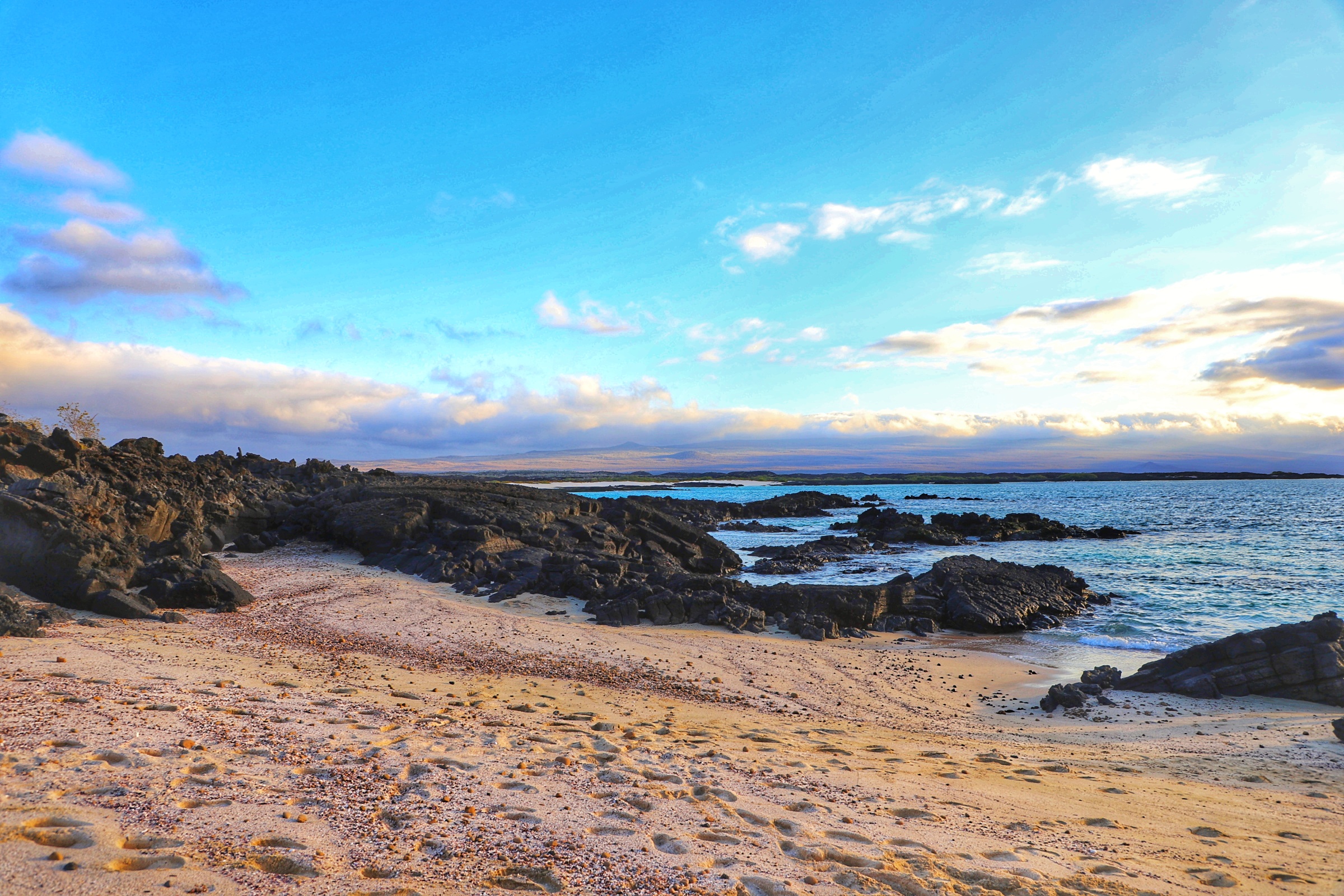
Visiting Ecuador
You’d be remiss if you went to the Galápagos and didn’t also explore some of what mainland Ecuador has to offer, whether its cloud forests or its slice of the Amazon Rainforest. Certainly, the capital city of Quito, one of the oldest Spanish cities in the Americas, deserves your attention as well.
Dating to 1534 when it was formally founded as San Francisco de Quito, the historic old quarter is so well preserved and rich with cultural attractions, from resplendent churches to ancient convents and original plazas, that it was one of the first places to be declared a UNESCO World Cultural Heritage Site.
Stay right in the heart of it all at Casa Gangotena, a swanky outpost that was originally a single family mansion. The property is the only Relais & Châteaux hotel in Quito, and it retains much of that original, classical character as a private home, with gilded and ornate décor and stylings, extra-tall ceilings and a grand lobby with a spiral staircase.
The hotel looks down upon the Plaza de San Francisco, and all of the city’s main sites are within a short walk, which is mercifully convenient — at over 9,000 feet in elevation, long walks may not be high on your activity list. Quito is not only the second-highest capital city in the world, but also the closest to the equator; “ecuador” means equator in Spanish, after all.
Whether you earned it with a long walk or not, back at Casa Gangotena you can indulge with an elaborate tasting menu dinner. The hotel is known for its dining program, where it showcases modern techniques and inventive new riffs mixed with traditional Ecuadorian flavors and staple dishes.
It’s the allure of the Galápagos and the majesty of its surroundings, the legendary stories and historical pull of Darwin — or “Charlie D,” as Hernán enjoys referring to him — that likely brought you to Ecuador, though, and it might just leave you coming back for more.
“Galápagos always surprises us,” says Adriana, the third guide aboard our weeklong home away from home, the M/V Evolution. And if that’s coming from a seasoned expert, then no matter how prepared you are or how much you read up on the trip beforehand, the vastness and diversity of the Galápagos’ biome will no doubt surprise you, too, and in the best way possible.
This article appeared in an InsideHook newsletter. Sign up for free to get more on travel, wellness, style, drinking, and culture.
